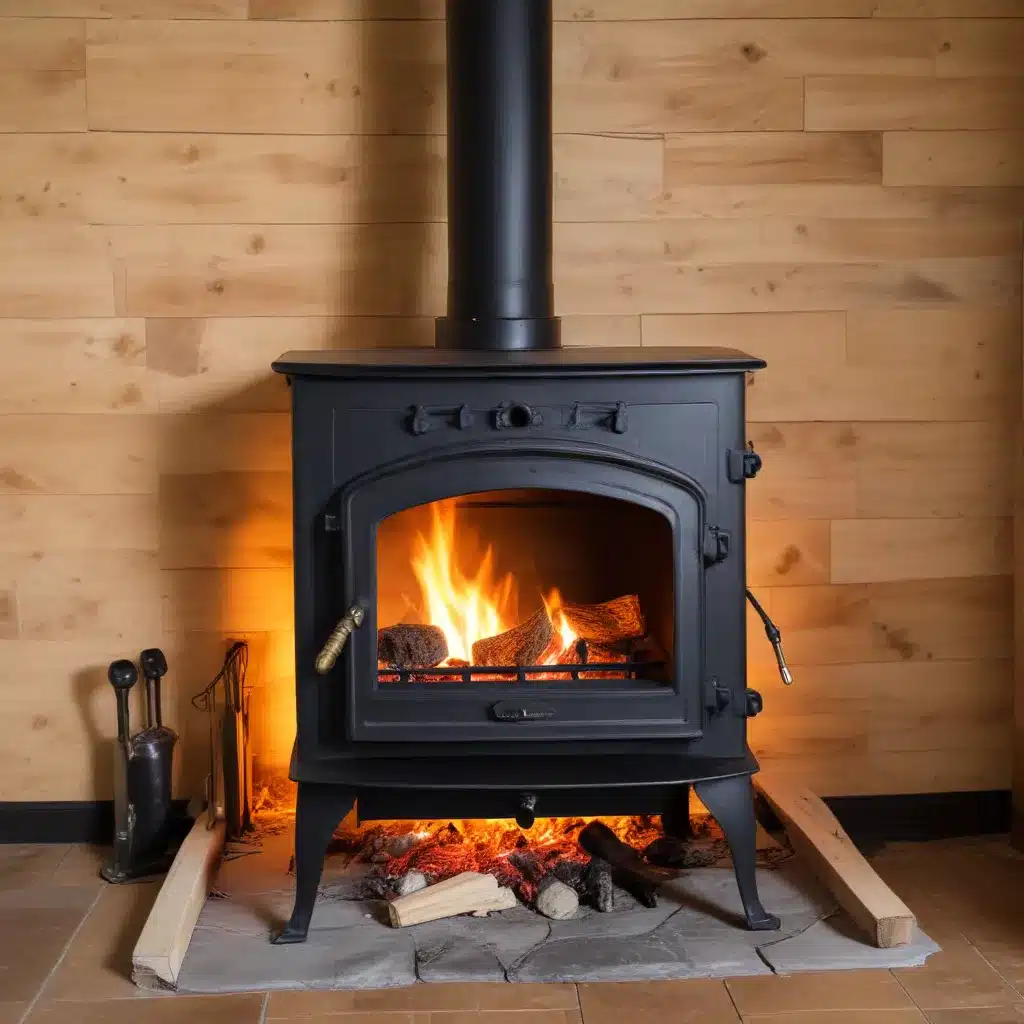
As a seasoned expert in wood stoves and heating solutions, I’m well-versed in providing practical tips and in-depth insights on wood stove maintenance, energy efficiency, and sustainable heating methods. In this comprehensive article, I’ll delve into the critical topic of preventing chimney fires – a crucial concern for any responsible wood stove owner.
Understanding Creosote: The Root Cause of Chimney Fires
At the heart of the issue lies a byproduct of wood burning called creosote. Creosote is a gummy, foul-smelling, corrosive, and highly combustible substance that can coat the inside of your chimney. It forms when the volatile gases released during the burning process condense on their way out of the chimney. This creosote buildup can create a serious fire hazard if left unchecked.
One of the telltale signs of a chimney fire is a popping or crackling noise coming from the stovepipe. This indicates that the creosote has ignited, and immediate action is required. If you ever hear this alarming sound, it’s crucial to close the flue and call the fire department immediately.
Proven Strategies to Prevent Chimney Fires
Preventing chimney fires requires a multifaceted approach, and as a responsible wood stove owner, there are several effective strategies you can implement to keep your home and family safe.
1. Regular Chimney Cleaning
Regularly cleaning your chimney is one of the most important steps in preventing chimney fires. As creosote builds up over time, it’s essential to have your chimney inspected and cleaned by a professional at least once a year, or more frequently if you use your wood stove extensively.
You can also consider investing in a chimney brush and extension rods to clean the chimney yourself, but this option may not be suitable for everyone, especially if you’re not comfortable working on the roof. Hiring a professional chimney sweep is the safest and most reliable way to ensure thorough cleaning and inspection.
2. Burning Dry, Seasoned Wood
The type of wood you burn in your wood stove can have a significant impact on creosote buildup. Wet or unseasoned wood will not burn as hot as dry, seasoned wood, leading to more smoke and a faster accumulation of creosote in the chimney.
Whenever possible, use the hardest, driest firewood you can find. Avoid softwoods like pine, which tend to be more sappy and contribute to creosote formation. Hardwoods, such as oak, maple, or ash, are generally better choices for a cleaner, hotter burn.
3. Maintaining the “Burn Zone”
Burning your wood stove in the “burn zone” on a regular basis is crucial for preventing creosote buildup. The “burn zone” refers to the optimal temperature range for your stove, where it operates most efficiently and cleanly.
You can use a handy gadget that attaches to your stovepipe to monitor the temperature and ensure you’re burning within the recommended range. This will help minimize the amount of creosote that accumulates in your chimney over time.
4. Utilizing Creosote Removal Products (Cautiously)
While not a replacement for regular chimney cleaning, some homeowners have found success using creosote removal powders or liquids. These products are designed to help break down and remove creosote deposits when burned in the wood stove.
However, it’s important to use these products with caution, as the exact chemical composition and potential risks are not always well-known. Consult with a professional or the product manufacturer to understand the proper usage and potential safety concerns before incorporating them into your wood stove maintenance routine.
5. Ensuring Proper Wood Stove Installation and Ventilation
Proper installation and ventilation are essential for the safe and efficient operation of your wood stove. All certified wood stoves must be vented through a listed and labeled prefabricated metal chimney or a lined masonry chimney. Never attempt to use a gas vent, single-wall pipe, or unlined masonry chimney as a substitute, as this can be extremely dangerous.
Additionally, ensure that your wood stove is installed according to the manufacturer’s instructions, with the appropriate clearances from combustible materials. If your home is particularly airtight, make sure to provide an adequate air supply to the wood stove to facilitate complete combustion and minimize smoke and soot production.
Staying Vigilant and Prepared
While the strategies outlined above can significantly reduce the risk of chimney fires, it’s essential to remain vigilant and prepared in the event of an emergency. Be familiar with the signs of a chimney fire, and have a plan in place to quickly address the situation.
If you do experience a chimney fire, resist the urge to panic. Immediately close the flue to starve the fire of oxygen, and consider throwing wet newspapers or other materials into the wood stove to create steam and help extinguish the flames. Then, call the fire department right away.
By following these best practices and staying proactive with your wood stove maintenance, you can enjoy the warmth and cost-savings of this renewable heating source while prioritizing the safety of your home and loved ones. Remember, an ounce of prevention is worth a pound of cure when it comes to preventing chimney fires.
For more information on wood stove maintenance, energy-efficient heating solutions, and sustainable living, be sure to visit https://woodstoveheaters.com/. Our team of experts is dedicated to providing reliable, practical, and up-to-date advice to help you make the most of your wood stove.


